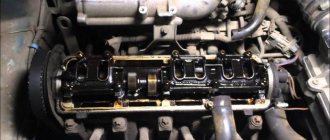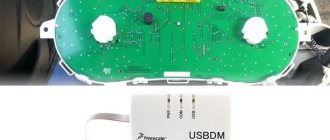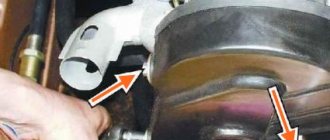The intake manifold is a component of an internal combustion engine that is responsible for supplying the air-fuel mixture to the cylinders. Similar units are found on all types of internal combustion engines.
The intake manifold is not just pipes through which the air-fuel mixture is supplied, it has a special shape, cross-section, length, and volume. The whole point is that the mixture of fuel and air must flow evenly into all cylinders of the engine in all operating modes.
Modern intake manifolds are high-tech products that ensure stable engine operation, increasing its performance. The final power and dynamics of your car depend on the design of the intake manifold.
Operating principle of the intake manifold
During the downward movement of the pistons, a vacuum effect is formed: the flow of the mixture in the manifold rests against the closed intake valve at the stroke of the engine. As the speed increases, the mixture in the intake manifold is reflected from obstacles and begins to make “oscillatory movements.” After the formation of such movements, the flow of the mixture moves at a higher speed. Under certain conditions, such oscillations become resonant, as a result of which the mixture enters the cylinders with high pressure (the process is called resonant charging).
A properly designed manifold ensures better ventilation of the cylinders. This occurs due to the pressure difference in the intake and exhaust tracts. Valves for the intake and exhaust of gases have a certain advance step of the engine stroke. It is necessary that the valve be maximally open or closed at the optimal moment, that is, during one cycle of cylinder operation, both valves are slightly open for a fraction of a second. The pressure at the inlet becomes slightly higher than at the outlet (where gases have already been released). This ensures more efficient purging of the combustion chamber.
Types of intake manifolds
There are the following types of intake manifolds:
- steel;
- aluminum;
- plastic;
- with variable geometry;
- with exhaust gas control valves (EGR);
- turbocharged;
- with point fuel injection, etc.
On modern engines, manifolds with point fuel injection are quite common. In this modification, fuel is supplied using electromagnetic injectors installed in each of its pipe-channels.
The intake manifold, like the engine as a whole, operates productively within a certain speed range. The design and type of installed manifold depends on the layout of the cylinder block, on the target orientation of the engine and on design solutions in general.
All of the above collectors are divided into two groups:
A single-plane manifold supplies the air-fuel mixture through one common channel, while a multi-plane manifold initially divides the mixture flow into two streams.
Typically, engines with dual-plane manifolds produce more power at low and mid-range speeds between 2000-4000 rpm. At high levels, the power will be slightly lower due to the turbulence formed.
A manifold with a common chamber without partitions reveals its potential at speeds of 5000 and above.
Installing an intake manifold of a different modification does not guarantee improved engine performance. Usually such parts are designed together with it.
Intake manifold device
This intake manifold, a photo of which is posted on our Internet portal, is connected to pipes coming from the cooling system. When diagnosing the operation of this component of the engine starting system, it is necessary to monitor the tightness of the joints of these parts with the fittings of the manifold system and the wear of the clamps.
By its design, the VAZ 2106 intake manifold, the price of which is not exorbitant, but is within the acceptable range, is a fairly reliable mechanical unit and rarely fails. Among the identified defects, it is necessary to note the incorrect installation of such a part as the intake manifold gasket, which occurs due to incorrect installation of the spare part on the car either by the driver or by a car mechanic at a service station. It is rare, but it still happens that the intake manifold becomes corroded and excessive air supply appears, which, of course, requires replacing it with a new product.
A standard manifold can be purchased at all specialized VAZ auto parts stores. Let's look at the intake manifold, the design of which is very simple. It consists of an inlet pipe, a drain pipe and a fitting through which the coolant is discharged and cooled for normal operation of the vehicle.
Variable geometry intake manifolds
The system for changing the geometry of the intake manifold deserves special attention.
Engines with variable intake tract length
Pulsing movements in the intake manifold certainly helps its operation, but the process only starts within a range of certain vibration frequencies. The pulse length is proportional to the length of the collector pipe. This principle is used in variable-length intake manifolds. The electronic engine control unit controls the speed and sends a signal to the valve to turn on the “small” or “large” mixture supply circle.
Design of collectors with changing channel cross-sections
If the cross-section of the intake manifold changes along the direction of movement of the fuel mixture, dampers are installed, which in the closed position do not completely block the flow of the mixture, but reduce the clearance of the manifold. A change in the flow cross-section leads to turbulence and an increase in its speed. Such devices are controlled by an on-board computer.
Intake manifolds with exhaust gas recirculation system
Intake manifolds with EGR Exhaust Gas Recirculation systems are designed to reduce toxic emissions into the atmosphere. Similar manifold designs are installed on both gasoline and diesel engines. The principle of operation is simple - exhaust gases from the exhaust system flow back into the intake manifold through a separate valve, which reduces the oxygen content in the air-fuel mixture, which means the intensity of oxidation and the temperature in the combustion chambers are reduced. The system turns on only in certain modes, for example, at idle.
Repair and maintenance of intake manifolds
A modern intake manifold is a complex part. Breakdowns also happen to it. Let's look at typical ones.
Leakage problems
This is the first problem with intake systems, as well as many other components of the car. Vibrations, changes in humidity, pressure and temperature affect rubber (paranitic, etc.) seals, of which there are quite a few in complex intake systems. Additional air may enter the mixture, the so-called “suction”.
Additional portions of oxygen deplete the mixture, the engine loses traction, and problems with idle speed appear. There may be engine ECU errors. All these symptoms indicate problems with the tightness of the intake tract.
Air leaks in the intake manifold can significantly affect the dynamic performance of the engine as a whole. After the seal is restored, engine operation returns to normal.
Intake manifold contamination
The intake tract must be checked from time to time for deposits on the walls. A problem like this can have a significant impact on the dynamics of the car. The manifold becomes clogged especially often on engines with an exhaust gas recirculation system. In such cases, it is necessary to disassemble and clean the device with a special compound.
Deformations and mechanical damage to the housing
Plastic and aluminum are widely used for the production of collectors, and these materials, as is known, can be deformed due to exposure to high temperatures. Plastic cracks and dries out over time. Aluminum manifolds may burst due to vibrations. Elements with severely damaged geometry must be replaced. Aluminum parts can be welded using argon arc welding.
Increased air temperature in the intake manifold
The causes of this problem may be:
- long-term idling in conditions of high air temperature (for example, in traffic jams);
- malfunctions of the cooling system and an increase in the overall engine temperature;
- poor ventilation of the engine compartment due to a clogged radiator;
- erroneous reading of the temperature sensor in the intake manifold;
- errors in the control unit firmware.
The solution is to check the cooling system components and diagnose electronic systems.
Popping sounds in the intake manifold
During ignition of the fuel in the engine cylinders, tightness conditions must be observed (both valves must be tightly closed). If the fuel is ignited with the intake valve open or slightly open, the fuel-air mixture may ignite in the manifold itself, resulting in a characteristic “popping” sound. Such breakdowns are quite dangerous - they can lead to significant damage.
Replacing the intake manifold
The current article is the result of our own experience in replacing the intake manifold on our D14 engines, but it is also suitable for a similar engine D14Z1, D14Z2, D16Y7 for example. I'm sure the manifolds on these engines are the same. Now I will describe how I changed the VK to D14A3. The first thing you need to do is to understand why you need to replace the vertical intake manifold with D16Z6 (or D16Y8 for example). As you can see in the picture below, the D14A3 (on the left) has guides of different lengths, all four guides are connected into a single system. There are four reasons why you need to replace the manifold. Firstly, air flow and mixture quality will improve with the replacement of the intake manifold. The second reason is not obvious. I didn't do anything special, but the sound changed a lot due to the Intake Manifold change. The sound became much lower than before. At the bottom of the article there are video examples of how the engine sounds and sounds, I have attached it to the article in 3GP format. There is a third reason, if you install OBD1 you will be able to unlock the full potential of the four fuel injectors multipoint injection, and you will definitely need to replace the intake manifold with one that supports the IACV valve. What's the fourth reason? Yes, it just looks better under the hood! Let's start…
Symptoms of air leaks
The first sign of air leaks is the Check Engine light coming on. There are many reasons to turn on this light bulb. You'll need to rule out other problems before you decide it's a leak. But be sure that it is an air leak if it is accompanied by hissing from the engine and loss of power.
Turbulence in the intake manifold
This paragraph does not apply to engines with direct injection. The fuel enters the intake manifold in a finely atomized form and is then mixed with air. Some of it may settle on the walls of the intake manifold under the influence of electrostatic forces. This phenomenon is extremely undesirable, since as a result, much less fuel will enter the cylinders, and the air-fuel proportion calculated by the electronic control unit will be violated in the direction of increasing the volume fraction of air.
Turbulence helps combat fuel condensation. Under its influence, the fuel is better atomized, and its combustion occurs more completely. As a result, engine power increases and the risk of detonation decreases. To ensure the appearance of turbulence, the inner surface of the intake manifold is not polished, but rather made rough. Here it is important to achieve the optimal value of turbulence, since as it increases, pressure drops begin to occur inside the intake manifold, and engine power decreases.
Replacing the pneumatic chamber of the system for changing the length of the intake manifold
To replace the pneumatic chamber, you need to unscrew two screws with a torx bit or a suitable screwdriver
and unhook the rod
If there is no new pneumatic chamber yet or you will be repairing the old one, but you need to drive, then screw the screws into place and tie the damper axis to one of them
Now comes the fun part! After the pneumatic chamber had already been dismantled, it turned out that the problem was not a torn diaphragm. When they turned it over, they saw this:
Through such a gap air was sucked into the intake manifold!
Since a new pneumatic chamber is not easy to find and its price is the same as a set of good spark plugs, it was decided to try to repair it and replace the spark plugs
Soldering was not possible, since this metal cannot be tinned. I also gave up welding.
Salvation was found in a tool for repairing bumpers and other body elements.
How to use it is described in the article How to seal a bumper
Beauty is not needed there, but reliability is important, since a spring presses inside this part that comes off. Therefore, in addition to tightness, mechanical strength is also necessary. It turned out, in general, like this
The pneumatic chamber began to work better than new
There were a lot of questions in the comments about checking the pneumatic chamber, so I decided to add a video of checking a working pneumatic chamber
And here is a full video about the system for changing the length of the intake manifold
Have you recently paid attention to the system for changing the length of the intake manifold in your car? I advise you to look
Shape and volumetric efficiency
One of the most important parameters of the intake manifold that determines its efficiency is its shape. The basic rule that all engineers adhere to is that the intake manifold should not have any angular shapes , as this will provoke pressure drops and, as a result, worse filling of the cylinders with air or working mixture. Therefore, all collectors have smooth transitions between segments and rounded shapes.
The vast majority of current collectors use runners. They are separate pipes diverging from the central entrance of the manifold to all available intake channels in the cylinder head. Their task is to use a phenomenon called Helmholtz resonance. The operating principle of the design is as follows.
At the moment when suction occurs, air flows at a very high speed through the open inlet valve. When the valve closes, the air that did not have time to enter the cylinder retains a large impulse, which means it presses on the valve, resulting in a high-pressure zone. Then pressure equalization occurs, with lower pressure in the manifold. Due to the influence of inertial forces, leveling occurs with fluctuations: first, air enters the runner at a pressure lower than in the manifold, then at a higher one. This process occurs at the speed of sound, and before the intake valve opens again, oscillations can occur many times.
The smaller the diameter of the runner, the greater the change in pressure due to resonant air vibrations. As the piston moves down, the pressure at the outlet of the runner decreases. This low pressure pulse then travels to the manifold inlet where it turns into a high pressure pulse that travels in the opposite direction through the runner and valve, after which the valve closes.
Intake manifold geometry modification systems
Since the fixed length of the intake manifold ensures high-quality filling of the cylinders only in limited ranges of crankshaft rotation frequencies, an intake manifold with a geometry changing system is considered more preferable. Either its length, or diameter, or both parameters can change.
Variable length intake manifold
It is used on naturally aspirated power units, both gasoline and diesel. When the engine operates at low speeds, the length of the manifold must be large to achieve high torque and throttle response; at high speeds, it must be short so that the power unit can develop maximum power. To change the geometry, a valve included in the engine control system is used. It switches the manifold from one length to another.
The variable length intake manifold works as follows. When the intake valve closes, the air remaining in the manifold begins to oscillate, the frequency of which is proportional to the length of the manifold itself and engine speed. When resonance occurs, a pumping effect appears (resonance boost). As a result, air is supplied to the opening intake valves under increased pressure.
In engines equipped with supercharging systems, such an intake manifold with variable geometry is not used, since air is forced into the cylinders. In such power units, the shortest manifolds are used, thereby reducing the dimensions and cost of engine production.
The system for changing the geometry of the intake manifold is called differently by different manufacturers:
- BMW calls it Differential Variable Air Intake (DIVA);
- for Ford it is Dual-Stage Intake (DSI);
- in Mazda cars the system is called Variable Inertia Charging System (VICS), in some cases Variable Resonance Induction System (VRIS).
Variable intake manifold
Can be used on any engines, including those equipped with supercharging. As the cross-section decreases, the speed of the air passing through the manifold increases, therefore, mixture formation improves and the working mixture burns more completely.
The system for changing the geometry of the intake manifold has the following device. The intake port of each cylinder is divided into two - one for each intake valve, inside one of which there is a damper. The damper is opened and closed by a vacuum regulator or an electric motor.
When the engine is running under light load, the dampers are closed, air is supplied through one channel and enters the cylinder only through one valve. This creates turbulence in the cylinder, which improves mixture formation and the quality of fuel combustion. Under load, the dampers open and air is supplied through both channels, thereby increasing engine power.
There are many variations of such systems, for example, Opel has a system for changing the geometry of the intake manifold called Twin Port, Ford has two types - Intake Runner Control (IMRC), Charge Motion Control Valve (CMCV), Toyota and Volvo have Variable Induction System or Intake System (VIS).
Manifold tuning
Engine tuning is a whole range of work to refine its individual components and parts. The intake manifold can also be modified to improve engine performance.
Tuning this part has two directions:
- to overcome the negative influence of its form;
- for finishing the internal surface.
What does form have to do with it?
The flow of air or working mixture in the manifold is uneven due to its shape. If the manifold is asymmetrical, then the largest amount of air or fuel-air mixture will enter the first cylinder, and less will enter each subsequent one. The symmetrical one also has a drawback: there, the largest amount of air enters the middle cylinders. In both cases, the cylinders operate unevenly on mixtures of different qualities. As a result, engine power decreases.
Tuning, in this case, involves replacing the standard intake manifold with a multi-throttle intake system. Its design is such that the air flows supplied to the cylinders are independent of each other, since each of the cylinders is equipped with its own throttle valve.
"Internal" work
If there is a lack of funds, tuning can be done more cheaply, almost for nothing. Inside the reservoirs there are almost always a large number of irregularities and tides, and the surface is rough. All together, this causes unnecessary turbulence that interferes with the quality filling of the cylinders. During measured driving, this phenomenon is almost unnoticeable, but if you want to achieve greater efficiency from the engine, you need to fight these shortcomings.
Tuning a standard intake manifold involves grinding its inner surface in order to remove tides and roughness. You need to grind not until a mirror appears, but only until the entire surface is uniform. If you overdo it, drops of fuel will condense on the walls and tuning will give a completely opposite result.
Finally, in order for the tuning to be as complete as possible, you need to pay attention to the junction of the manifold with the cylinder head. Often, a step remains in this place, interfering with the normal flow of air flow, which must be eliminated (this is where cylinder head tuning begins). » alt=»»>
- Intake manifold - what is it?
- 1. What functions does the intake manifold perform?
- 2. Intake manifold flaps and other structural elements
- 3. Why might the intake manifold need to be repaired?
- 4. Remove the manifold yourself
The intake manifold is an integral part of the attachments of an automobile internal combustion engine. Basically, this device is designed to collect all the exhaust gases from several cylinders into one single pipe.
For the most part, the material used to make the exhaust manifold is cast iron. On one side, the intake manifold is attached to the internal combustion engine itself. On the other hand, it is attached to the exhaust pipe or, when installed, to the catalytic converter. Due to the specific location of the intake manifold, its operation is carried out under rather extreme conditions.
1. What functions does the intake manifold perform?
This device is very important for the successful functioning of the entire vehicle system. This is because it is in the intake manifold that air and fuel meet. As a result, a flammable mixture with the required consistency arises. In addition, this device controls the process in which a given consistency must be divided straightly and evenly into all defined cylinders.
This, in turn, is a very important procedure, since only this method can achieve the highest performance of a vehicle’s internal combustion engine. That is why you should not neglect the procedures for repairing and cleaning the intake manifold, as this is fraught with very negative consequences.
In addition, certain engine elements are attached to the intake manifold. These are: carburetor, fuel injection equipment, throttle valves. A certain vacuum is formed in the intake manifold, which is the source of drive force for many systems: cruise control, windshield wipers, vacuum brake booster. If one of the above systems malfunctions or fails, as is usually the case, complete removal of the intake manifold will be required.
Purpose of the intake manifold
The main purpose of this element of the car is to create a uniform mixture of fuel and air entering the cylinders. This allows you to distribute the load on the engine, achieving maximum performance optimization. The intake manifold is attached directly to the internal combustion engine on one side and to the exhaust pipe on the other.
The intake manifold is extremely important for the formation of the air-fuel mixture. It is in this form that fuel consumption is most efficient, which not only increases the performance of the vehicle, but also reduces consumption. The manifold performs another function - uniform distribution of the resulting mixture among the engine cylinders. This allows the load to be distributed among all parts of the engine, reducing wear and increasing performance.
Although the car can run without a manifold, this element significantly improves performance and reduces engine wear. Therefore, it is important to take into account its condition and periodically clean it from blockages and dirt. Ignoring this fact is fraught with deterioration in vehicle performance.
There is another function of the intake manifold - generating energy for other components of the car. During operation, a vacuum is created, which is used as a source of force for the brake booster, windshield wipers and many other elements. Therefore, disruption of secondary systems can also be a sign of collector failure.
Intake manifold flaps and other structural elements
Most often, the intake manifold is mounted on the left side of the cylinder head. In the modern world, due to the development of technology, this part is made from aluminum alloys or other composite plastic materials.
The sensor, which is located on the intake manifold, records the pressure and temperature, and the control unit directly calculates the entire mass of air located in it. Based on the data obtained, certain pulses are generated, with the help of which direct control of the injectors is carried out. This is how air and fuel of a given composition are mixed.
In the middle of the device itself there is a switch shaft and a vacuum element. Vacuum is supplied to the same element through the flaps into the intake manifold pipe. This vacuum is generated by a tandem pump. Each intake channel is divided into a filling section and a vortex section. The switch shaft, in turn, can only cover the filling section. It is at this moment that exhaust gases are sucked out through the vortex channel. Thus, the flow speed in this channel increases significantly.
Intake manifold design
The intake manifold is a system of tubes and valves united by one reservoir. Although the basic design is simple, modern cars are equipped with a host of features that improve engine efficiency.
Among the main components of the design it is worth noting:
- receiver;
- outlet tubes;
- dampers;
- nozzles;
- pressure and temperature sensor;
- shift shaft;
- vacuum element;
- tandem pump.
These elements are necessary for the normal functioning of the mechanism. Often, the process involves a control unit that receives data from the sensor and, based on it, coordinates the operation of the injectors.
It is important to take into account that each intake channel through which the mixture enters the cylinders has its own mixing and filling areas. This ensures even distribution of the mixture without additional dosing tools.
3. Why might the intake manifold need to be repaired?
At its core, the intake manifold has a rather complex design. Based on these considerations, the likelihood of breakdown or malfunction of a certain individual element of the entire device increases significantly. Dampers often fail (mainly on German car brands).
In this case, the car becomes very weak and significantly loses power. At the same time, fuel consumption increases significantly, and traction and engine performance generally deteriorate. Manifold flaps fail for several reasons: low-quality material used to make these flaps, too high a temperature, and the presence of oil condensate.
In addition, the control valve for these intake manifold flaps may also fail. A sign that oil consistency has entered the intake manifold is its increased consumption, which can exceed 1 liter per 1 thousand km.
In parts that are made of plastic, you can often encounter a problem that involves disconnecting the tube from the swirler. This, in turn, gives rise to a certain characteristic sound during actual movement: noise and crackling in the car. This breakdown can be completely solved even with your own hands.
In addition, air leaks may occur in the intake manifold itself. This breakdown may affect the vehicle's power. But the most important thing is that there will be a serious noise that resembles suction or blowing.
In automotive nature, there is a special sensor that is used to measure the absolute pressure in the intake manifold. This sensor, in addition to the above function, is responsible for optimizing combustion processes and the formation of a mixture of air and fuel. If this sensor fails, then most likely the electronic control unit will begin operating in emergency mode.
Sometimes it happens that the engine cannot be started at all. The design of the modern sensor, located in the intake manifold, is quite reliable. And yet, malfunctions in it are possible.
Intake manifold repair
Although the breakdown of this element occurs quite rarely, its repair is a headache for motorists. The reason for this is the ambiguity of diagnosing a breakdown, because often everyone blames the engine. Among the signs of collector failure it is worth noting:
- significant reduction in power;
- increased fuel consumption;
- arrhythmia of the system.
But in some cases there may be individual signs, which is important to consider. It is better to carry out comprehensive diagnostics at a car service center, which will give a more accurate result of the breakdown.
Often the valves in the manifold fail. In addition, the control valve may be damaged. If noise and crackling are observed in the system, then the reason for this is the disconnection of the tube from the swirler. However, it is worth understanding this after the fact.
When making repairs, you should first analyze the data from the manifold sensor. It will allow you to verify the breakdown of the element and even determine its cause. Next, you need to remove the device, which is done in several steps.
- The pressure in the system is reduced by turning off the fuel pump.
- The battery is disconnected and the decorative casing is removed.
- The air filter is removed.
- The throttle assembly is disconnected.
- The intake manifold itself is removed.
After which the actual repair of the device begins. It is important to note that some parts cannot be repaired. Among them, the flaps and control valve are especially problematic; if they break, you need to purchase a new part.
Often the sensor itself fails. If it does not work correctly, the control unit incorrectly calculates the parameters, which leads to poor formation of the air-fuel mixture. This must be taken into account, so if it breaks, it is important not to tighten it and replace the part, otherwise you may damage the engine. Quick troubleshooting applies to all intake manifold defects.
The repair is quite complicated; problems may arise when removing it and replacing certain elements. It is important to check all connections for insulation to avoid pressure leaks. It is also worth monitoring the valves so that they do not block the flow of the mixture.
The intake manifold is an important element that significantly increases engine efficiency. It has a rather complex design, but its operating principle is simple. All components in a collector are important, as well as the size and shape of the elements, which ensures the efficiency of the device.
And for a better understanding of the design of the intake manifold, it is recommended to watch this video:
All the nuances of the production of this device are described here, which will allow you to see the design and purpose of its individual elements, which will especially help in repairs for those who have not previously encountered such tasks.
For optimal operation, the intake manifold of a car must have certain geometric parameters selected for a given crankshaft speed. For this reason, the classic design ensures correct filling of the cylinders only in a limited engine speed range. To ensure that a sufficient amount of air enters the combustion chamber at any speed, a system is used to change the geometry of the intake manifold.










